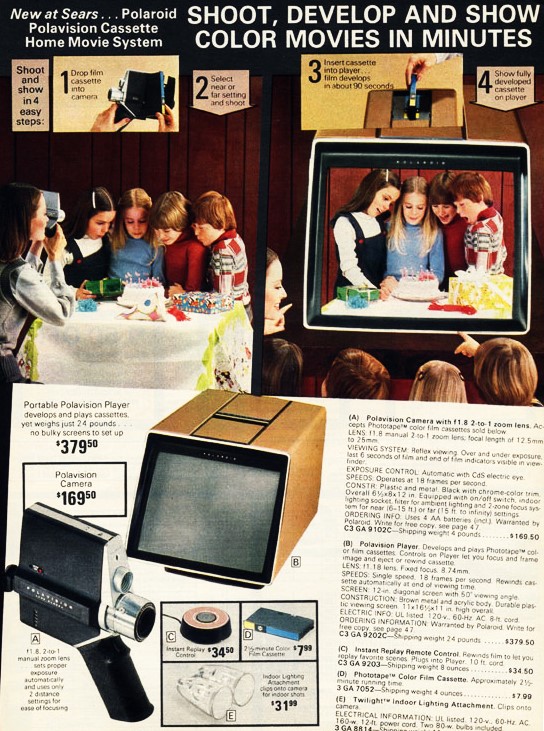I heard it's like 14/15 fps?
Announcement
Collapse
No announcement yet.
What is the frame rate of Polavision film cartridges?
Collapse
X
-
Robert,
Interesting! I wonder if that could be the actual speed as opposed to what was claimed. Jurgen Lossau's excellent reference work The Complete Catalog of Movie Cameras lists the speed at 18 fps.
In this thread , Paul Adsett posted an ad (shown below) that mentions the speed is 18 fps.

Comment
-
Robert Here is mine purchased in 1977 from Dixons UK. I got it mainly to film test shots with my film making group before with switched to filming on Super 8 as Pola was a handy tool for just that. Very dense emulsion and needed good light.
Here is my own Polavision in operation ten years ago, still works but beware of the white drive gear they crack and split.
AT 18fps :-)
Comment
-
It did what a video recorder did except it didn't have sound and at higher cost. The clincher is it came out right around the time those first video cameras where you slung your VCR over your shoulder showed up.
Timing is everything! It's interesting to imagine what might have happened if it came out ten years earlier.
Comment
-
Short lived yes, but ground breaking at the time which just became available a little too late. I was impressed at the time and you did feel a bit special with the multitude of boxes the whole kit came with and the 'Executive Camera kit'. This teenager executive carried the lot tied to the carrier of a 50cc moped home, I must have been a sight. Vaguely remember Dixons were bashing the whole kit out at the end for £90 including the camera light. Polavision on had a sale life of around 12 months over here but it was a wonderful tool.
Had some in for film transfer a bit ago and timed a film in the player which ran for 2 min 52 seconds from loading. Fascinating listening to the film processing itself in the player back then.
When this then teenager ordered my kit I was told I joined a waiting list as orders were high, if you bumped into someone else filming Polavision you marveled at this new invention. Did scan all my own films which have been stored carefully and despite the age have preserved quite well. You will oft here some bemoaning the films have not lasted but this is usually due to poor storage. If they see heat or damp conditions they start to bubble.
Comment
-
I thought this was an interesting system too when it first came out. But reality was quite different when you had to view them on a tiny screen. Some thought that since it was Super 8 film in a cartridge you could just break open the cartridge and project the film on a normal projector. Again, reality was different when those same people tried to project them using standard equipment.
Comment
-
It seems the dark pictures were not only from the on-film filter system but also because the B&W negative image was not removed by the processing so limited the light transmission even more. I never knew they also made a 35mm transparency film (which did not have this problem) until I started checking for this thread.
Comment

Comment